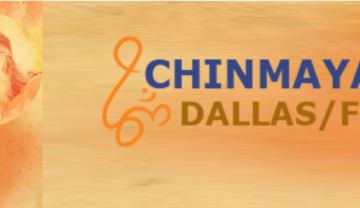Conclusion of Sri Rudra (Namaka Prashna)
Reference: Watch the entire series on You Tube Playlist. Below is a recap of Pujya Swami Sarveshananda ji’s recap on completion of the Namaka Prashna of Rudradhyayi. The Chamaka Prashna will be addressed in next discourse.
Salutations
We were indeed blessed with an opportunity to go through and share our understanding of Rudra Prashna since Feb. 2013, thanks to the commentators from earlier generations who added depth to our understanding of this ancient text. Salutations unto them, whose blessings enabled us to synthesize these commentaries and provide a concise picture. Explanations from the commentators listed below were frequently referred to during the discourses:
- Shayanacharya ji, who also wrote the commentaries on entire veda-s.
- Bhattabhaskara ji who is recognized even today as the greatest upasaka (devotee) of Lord Shiva. He provided us the dhyana shloka (contemplatative mantra) of each ruk (mantra). He clearly identified the rishi (seer), and ishta daiva (cherished deity) worshiped for each mantra.
- Vishnu Suri ji
- Abhinava Shankara from the Shringeri lineage. As bright and brilliant as Sri Adi Shankaracharya himself, he was often recognized as Abhinava Shankara.
- Maheshananda ji, from an ashram in Rajasthan produced the commentary called Rudradhyayi.
- Swami Amrutananda Puri from Rama Krishna Mission
- Skanda Deva who delivered the Skanda Deva Rudra Bhashya
Nyasa
We started the Rudram series with Laghunyasa. At one level nyasa means to renounce. It also means to hold or abide and to invoke. Hence sanyasa indicates both – giving up all our limitations and holding onto Paramatma while invoking His presence too. While giving up is one aspect, holding on and abiding in it is the other aspect of nyasa. Here the idea is that it is an upasana (worship), sitting closest to the divinity. It doesn’t denote physical proximity, but it is the mental aspect of attuning to that aspect of divinity – how we can elevate our mind to that higher level. The other meaning of upasana is nikruta vastuni utrkrustha bhavaha iti upasana. When you look at all these physical aspects, they are simply materials – idols, photos, etc.. But we are invoking Parameshwar (God) in that form of metal or stone. Thus it is no longer a stone or a metal but through that lingaakara (shape of a linga) we invoke the divinity in the stone or the metal.
Tuning in to the Divinity
In order to do that upasana the first step is to elevate this mind to that higher level. The sutra there is rudro butva rudram archayet arudra ha rudram ma archayet – the seekers qualified for worship and upasana of that divine are the ones who raise themselves to that aspect of divinity and fine tune their mind. You can’t just run in and out to do your puja for example. Maintaining the sanctity is as critical as a doctor performing the procedure in the operation theatre. The environment and equipment used has to be sterilized prior to it’s usage. Similarly, our ancient practices recommend that we first bathe, wear clothes that aren’t touched by anyone else and then you enter the temple. One thus has to fine tune to mind from the physical to the subtlest aspect to appreciate and be qualified to worship the Paramatma. So various kinds of nyasa-s were taken into consideration in the laghunyasa.
Dhyana shloka – We visualize and invoke that Lord in the dhyanam (contemplation).
Nyasa we invoke the adhisthana devata-s (presiding deities) in various limbs. The immortal tattva (essence) of the presiding deity is summoned in each limb and we fine tune ourselves to that immortality. Thus having invoked the deities, we seek Lord Ganesha’s blessings.
rudra roopa – The Terrible Form
As a seeker when we seek the Lord we come from various conditionings and limitations. We are responsible for being beaten up from all directions in our own lives. We live an unconscious life and get pulled in all directions pulping us each moment. We tend to approach the Lord with a lot of guilt, remorse, repentance and fear. We are flooded with fear because of our indulgence in all prohibited actions. With this perspective, the Lord appears to be in a terrible form who is ready to penalize us with all the astra and shastra-s such as the bows and arrows. The mind riddled with guilt conscience is constantly fearful of being on the receiving end of the Lord’s wrath. Honesty is appreciated only in the realm of integrity. So when the seeker lacks integrity, knowing and accepting one’s flaws honestly doesn’t help much. From this standpoint, the seeker’s visualization sees a terrible form of the Lord in that fearful mode.
vishveshwara roopa – The Magnificent Form
Then a transformation happens. The seeker settles down and slowly transforms into looking at the various aspects of divinity that has touched him. He sees the vishweshwara roopa (grandeur form) of the Lord. The earlier perception was of the rudra (terrible) form. At that point he wasn’t aware and couldn’t recognize the Lord’s splendor. Now he is aware of it in every aspect of the creation. The seeker realizes that it is the Lord’s presence alone in the various aspects of creation. The seeker offers dual namaskara for each name as the intensity of the seeker increases. namaha (salutations) is chanted in the beginning and at the end of each mantra.
The transcendental aspect of the entire creation is understood as the seeker becomes subtler and subtler. From the multitude to one focal point, and then from there on how this entire creation is pervaded and permeated by that Paramatma alone
Balancing – rudra gana (army)
In the last two anuvaka-s we focus on the fact that it isn’t just that the Lord is permeating and pervading in the entire creation, but that He also maintains the entire creation in a seamless balance. His aspect express as the rudra gana (army) and take care of the karma, karma phala and they are the karma phala data to maintain various aspects of this creation, in that seamless pattern of balance. We worship that aspect of Lord’s expression.
It requires a lot of stability of the intellect. When guru gives the directives to do our swadhyaya, japa, dhyana, tapas and we’ve been following it for 2-3 years, we ask our guru the next to-do item in our saadhana. If the intellect doesn’t have the stability and clarity it will keep pushing the mind towards more of “doing” rather than just “being”. The stability of intellect comes in when it is filled with jnana (knowledge). All aspects of the seeker’s lack of understanding and doubts are clarified through swadhyaya (daily study). That oneness with the Lord happens when we sit with that focal point finally collapsing that ego and the mind merges with the Paramatma. Finally the seeker says “I have done my work of fine tuning and clearing my mind to be able to focus on You. O Lord, give me the courage, strength, because you alone can take me to the other side.”
Chamaka Prashna
That was the overall perspective of the rudra tattva. Rudram is not complete until we chant the chamaka prashna. The namaka prashna is the section where namaha is chanted multiple times. The chamaka-section is where we chant cha me numerous times. We will complete the Chamaka Prashna in our next series.



